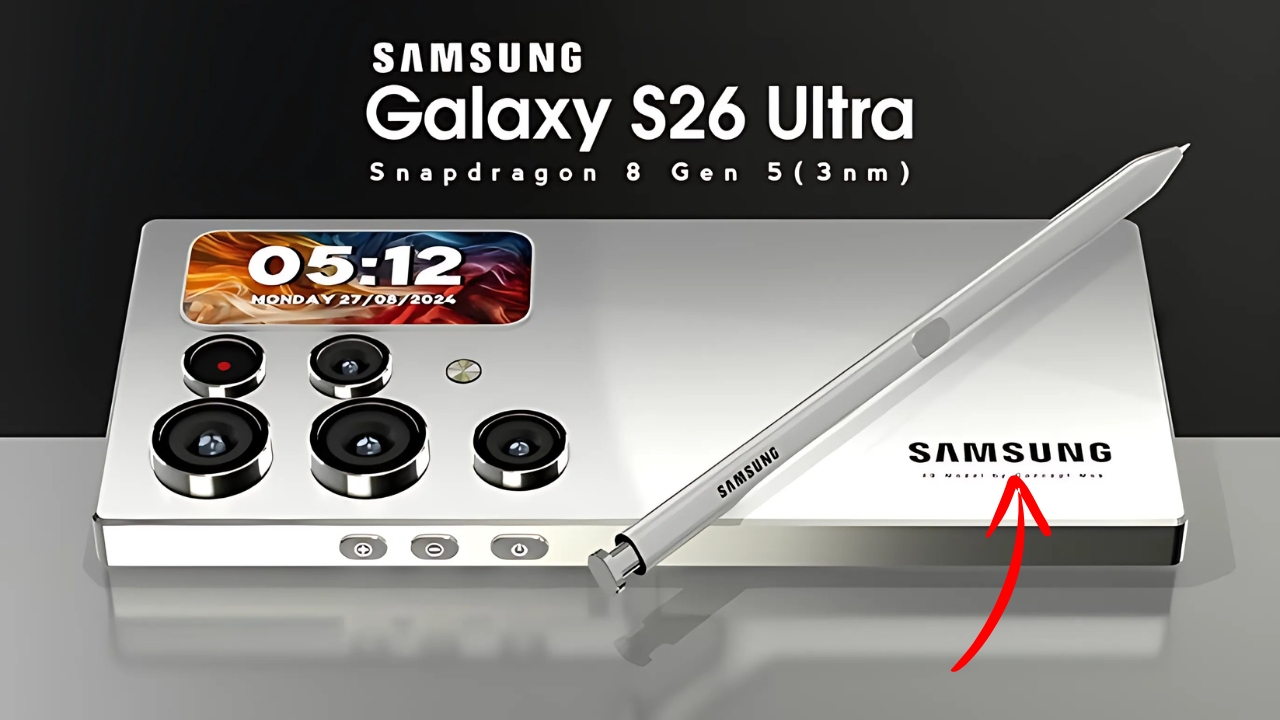Samsung Galaxy S26 Ultra : The smartphone industry continues to push technological boundaries, with Samsung reportedly developing the Galaxy S26 Ultra featuring an unprecedented 300-megapixel camera system.
This anticipated device represents a significant leap in mobile photography capabilities, promising to redefine what’s possible with smartphone cameras.
This detailed preview explores the expected features and implications of this groundbreaking technology.
300MP Camera Technology Explained
The rumored 300-megapixel sensor would represent a massive advancement in smartphone photography.
This ultra-high resolution enables capturing images with extraordinary detail levels previously exclusive to professional medium-format cameras.
The technology likely employs advanced pixel-binning techniques, combining multiple pixels in lower light conditions while utilizing full resolution when lighting permits.
Such high resolution offers remarkable flexibility in post-processing. Users could crop images dramatically while maintaining print-quality results, effectively providing powerful zoom capabilities without dedicated telephoto lenses.
The sensor technology would need sophisticated image processing to manage the enormous data generated by each photograph, requiring advanced chipsets and optimized software algorithms.
The practical applications extend beyond simple resolution numbers. Professional photographers could use the device for commercial work, while casual users benefit from the ability to capture once-in-a-lifetime moments with unprecedented clarity.
The technology democratizes high-resolution photography, making it accessible to anyone carrying a smartphone.
Expected Design Evolution
Accommodating a 300MP sensor requires innovative design solutions. Samsung would need to balance the larger sensor requirements with maintaining a sleek device profile.
Advanced periscope lens arrangements and sophisticated optical engineering could minimize camera bump while maximizing sensor capabilities.
The device design would likely showcase premium materials befitting its flagship status.
Titanium frames, ceramic backs, or other advanced materials could provide durability while managing the thermal requirements of processing 300MP images.
The aesthetic would need to communicate technological superiority while remaining elegant and functional.
Integration with the S Pen ecosystem would continue, potentially adding new photography-related functions.
The stylus could enable precise selection tools for editing high-resolution images directly on the device, or provide advanced controls for manual photography settings.
Display Technology Advancements
Viewing 300MP images requires display technology that can showcase the captured detail.
The S26 Ultra would likely feature Samsung’s most advanced display technology, with higher resolutions and improved color accuracy.
Variable refresh rates would optimize battery life while providing smooth scrolling through massive image files.
The display brightness and clarity would need to excel for accurate photo review in various lighting conditions.
HDR support would ensure photographers can evaluate the full dynamic range captured by the advanced sensor.
The screen would serve as both viewfinder and editing canvas, requiring exceptional quality throughout.
Processing Power Requirements
Managing 300MP images demands extraordinary processing capabilities. The device would require cutting-edge chipsets with dedicated image signal processors capable of handling enormous data throughput.
AI acceleration would be essential for real-time processing of computational photography features.
RAM configurations would need to be generous, potentially exceeding current flagship standards.
Storage speeds become critical when saving files potentially exceeding 100MB per image.
The system architecture would balance performance with efficiency to maintain reasonable battery life despite intensive processing requirements.
Software and AI Integration
The camera software would leverage artificial intelligence extensively to make 300MP photography accessible. Intelligent scene optimization would analyze compositions and adjust settings automatically.
Advanced HDR processing would combine multiple exposures seamlessly, while AI-powered zoom would extract maximum detail from the high-resolution sensor.
Post-processing capabilities would rival desktop software, with AI-assisted editing tools built into the gallery application.
Features might include automatic subject enhancement, intelligent cropping suggestions, and advanced color grading options.
The software would need to manage file sizes intelligently, offering various compression options without sacrificing visible quality.
Practical Considerations
While 300MP sounds impressive, practical implementation requires addressing several challenges.
File storage becomes a concern, with each full-resolution image consuming significant space.
Samsung would likely implement intelligent storage solutions, automatically optimizing resolution based on intended use while preserving original data when needed.
Battery life optimization becomes crucial when processing such large files.
The device would need efficient power management to prevent excessive drain during photography sessions.
Fast charging technologies would be essential to minimize downtime for photography enthusiasts.
Expected Features Beyond Photography
The S26 Ultra would likely include comprehensive flagship features beyond the camera system.
Advanced connectivity options, including next-generation 5G and Wi-Fi standards, would facilitate quick sharing of large image files. Display technology might include under-display cameras for uninterrupted screen real estate.
Security features would protect valuable photographic work through advanced biometric systems and encryption.
Productivity features would continue Samsung’s tradition of positioning Ultra models as professional tools, with enhanced DeX capabilities and multi-window functionality.
Market Impact and Competition
A 300MP camera would significantly differentiate Samsung in the competitive flagship market.
This technology leap could influence industry direction, pushing competitors to advance their own camera systems.
The feature would justify premium pricing while attracting photography enthusiasts and professionals to the Android ecosystem.
Timeline and Availability
While Samsung hasn’t officially confirmed the S26 Ultra’s specifications, industry patterns suggest potential announcement windows.
Development of such advanced technology requires extensive testing and refinement.
Market availability would likely follow traditional Samsung release schedules, with global rollout following initial launch markets.
Samsung Galaxy S26 Ultra Conclusion
The Samsung Galaxy S26 Ultra’s rumored 300MP camera represents a bold vision for mobile photography’s future.
While challenging to implement, such technology would transform smartphone cameras from convenient tools to professional-grade instruments.
As anticipation builds, the potential for revolutionary mobile photography capabilities continues to excite enthusiasts and professionals alike.










